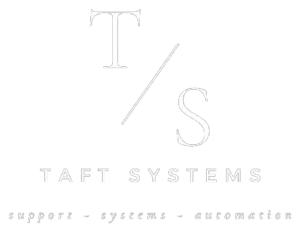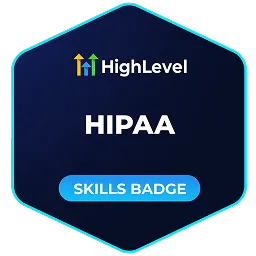
Webinars: Good Practices to Keep in Mind for Live Broadcasts
Webinars: Good Practices to Keep in Mind for Live Broadcasts
Webinars have become an essential tool for businesses to connect with their audiences, educate prospects, and establish authority in their industries. While the concept of hosting a webinar may seem straightforward, creating a live broadcast that truly engages participants and leaves a lasting impression requires careful planning, attention to detail, and a clear understanding of your audience’s needs.
A successful live webinar is more than just presenting information—it’s about fostering interaction, delivering value, and showcasing your brand in a professional and polished manner. Here’s how to approach live webinars with best practices that ensure your efforts are impactful and memorable.
Define and Prepare your Webinar with Purpose
Every great webinar begins with a clear objective. Whether you’re introducing a new product, providing industry insights, or offering educational content, your purpose will guide every aspect of your planning. Understanding what you want participants to gain ensures that your content is relevant and focused.
Preparation starts with crafting a compelling topic that resonates with your audience. A strong title that highlights the value of the webinar—such as “Boost Your Marketing ROI in 30 Days” or “Mastering Productivity with Proven Techniques”—grabs attention and sets expectations. From there, develop an agenda that outlines the structure of your presentation, including time for Q&A or audience interaction.
Thorough rehearsal is another cornerstone of effective preparation. Familiarize yourself with your material, practice transitions between slides, and test any live demonstrations or videos you plan to include. This ensures that your delivery feels confident and seamless during the live broadcast.
Prioritize Technical Excellence
Technical issues can derail even the most compelling webinar, so ensuring your setup is flawless is critical. Start with your internet connection—it should be stable and fast enough to support a smooth broadcast. A hardwired connection is often more reliable than Wi-Fi.
Audio quality is equally important. Invest in a high-quality microphone and test it before the webinar to avoid muffled or distorted sound. Background noise should be minimized, so consider hosting your webinar in a quiet space or using noise-canceling technology.
Video clarity adds professionalism to your presentation. Ensure your camera is positioned at eye level and that your background is clean and uncluttered. Good lighting—preferably natural light or soft artificial lighting—enhances your appearance on screen and keeps participants focused on you.
Choosing the right webinar platform is another key factor. Look for a platform that aligns with your goals, whether it’s robust engagement features, seamless integrations, or scalability for large audiences. Test the platform’s functionality beforehand to familiarize yourself with its tools and troubleshoot potential issues.
Engage Your Audience
One of the biggest advantages of live webinars is the opportunity for real-time interaction. Unlike pre-recorded videos, webinars allow you to engage directly with participants, making the experience more dynamic and impactful.
Start by creating opportunities for interaction from the outset. Polls, chat boxes, and live Q&A sessions encourage participants to share their thoughts and ask questions, fostering a sense of involvement. Addressing questions as they arise, or dedicating a specific segment to audience inquiries shows that you value their input and helps clarify key points.
Personalization is another powerful way to engage your audience. Use participants’ names when responding to questions or comments and reference specific insights or contributions they’ve shared. This creates a more intimate and conversational atmosphere, even in a virtual setting.
Storytelling is an effective technique for maintaining engagement throughout your presentation. Sharing relatable anecdotes, case studies, or success stories helps illustrate your points while keeping the content relatable and memorable.
Deliver Value-Driven Content
At the core of any successful webinar is the content itself. Participants join your live broadcast because they expect to learn something valuable, so it’s essential to deliver content that meets or exceeds their expectations.
Start by addressing a specific problem or question your audience faces. Clearly outline the challenges and offer actionable solutions or insights that they can apply immediately. Avoid overwhelming participants with excessive information—instead, focus on delivering a few key takeaways that are both impactful and easy to implement.
Visual aids, such as slides, infographics, or live demonstrations, can enhance your presentation and make complex concepts more accessible. However, avoid cluttering your slides with too much text or data. Keep visuals clean and focused, using them to complement your spoken content rather than overshadowing it.
A strong call to action (CTA) is essential for concluding your webinar effectively. Whether you want participants to schedule a consultation, download a resource, or register for another event, make your CTA clear, compelling, and easy to follow.
Manage Time Effectively
Respecting your audience’s time is a hallmark of a professional webinar. Start and end on schedule, and stick to the agenda you’ve outlined. A webinar that runs too long risks losing participants’ attention, while one that feels rushed may leave them dissatisfied.
To manage your time effectively, practice your presentation multiple times and refine your pacing. Allocate specific time blocks for each segment, including interaction or Q&A, and monitor the clock during the live broadcast to stay on track.
If questions or discussions threaten to derail your timing, politely acknowledge them and offer to address them in follow-up materials or a dedicated session. This ensures the webinar remains focused while still valuing participant input.
Follow Up with Purpose
A live webinar doesn’t end when the broadcast concludes—what happens afterward is just as important. Following up with participants reinforces your message, provides additional value, and opens the door for further engagement.
Send a thank-you email to all attendees, expressing gratitude for their time and participation. Include a recording of the webinar for those who want to revisit the content or share it with others. Supplementary materials, such as slide decks, related articles, or exclusive offers, add value and keep your brand top of mind.
For participants who registered but didn’t attend, follow up with a recording and a message emphasizing what they missed. This helps maintain their interest and encourages them to engage with your future events.
Analyze the performance of your webinar to identify strengths and areas for improvement. Metrics like attendance rates, engagement levels, and feedback from participants provide valuable insights that can inform your approach to future broadcasts.
A live webinar is more than just a presentation—it’s an opportunity to connect with your audience, share your expertise, and build lasting relationships. By preparing thoroughly, prioritizing technical excellence, and delivering value-driven content, you can create a broadcast that leaves a lasting impression and achieves your goals.
With a thoughtful approach and a commitment to continuous improvement, webinars can become a cornerstone of your strategy, helping you reach new heights in your business journey.
Turn your webinars into high-impact experiences! With Taft Systems, you can boost engagement, streamline your setup, and deliver seamless live broadcasts. Get started today—schedule your free strategy session at TaftSystems.com/Discovery-call or email us at [email protected]!














